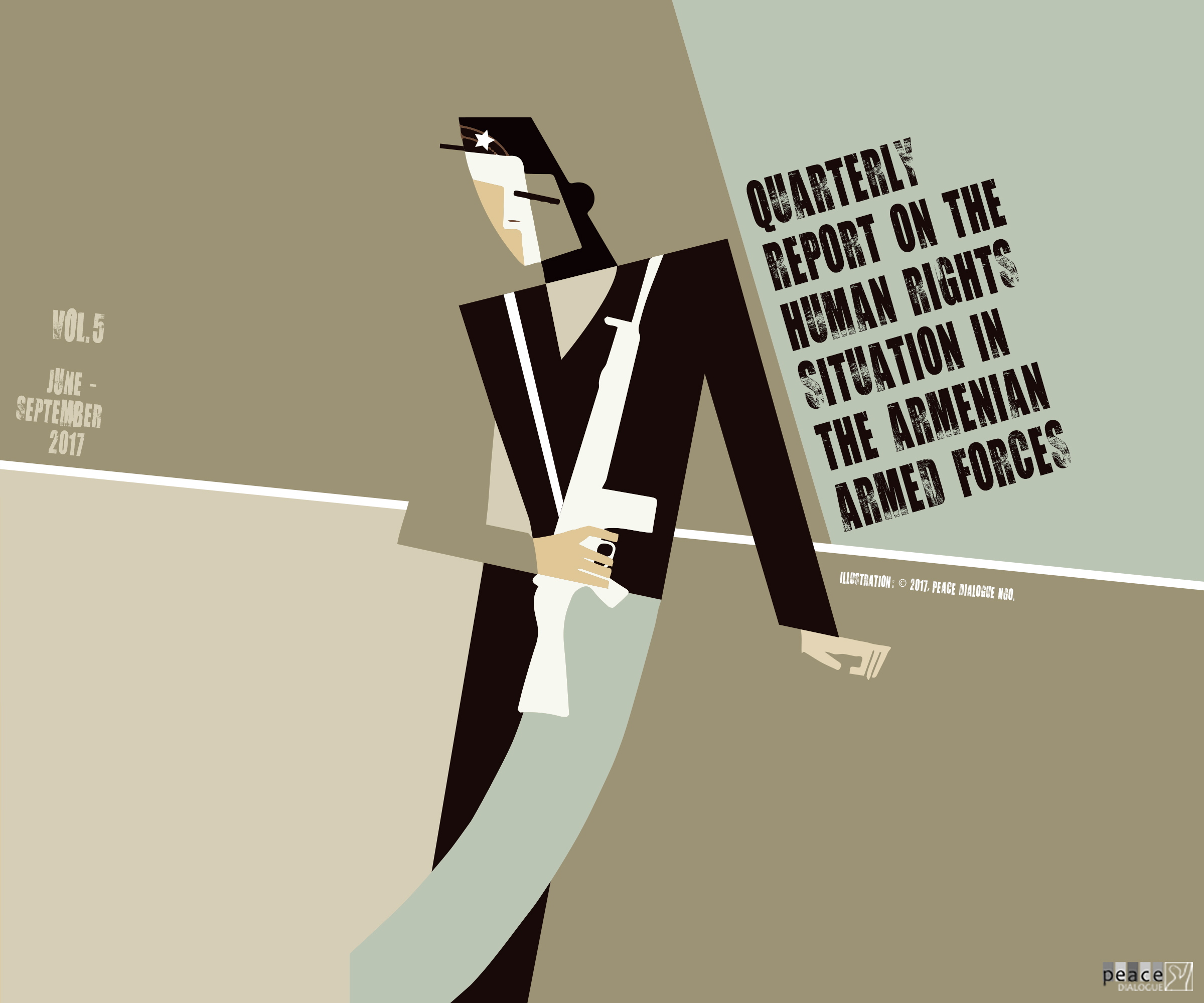
July-September, 2017
Peace Dialogue NGO is presenting the current issue of its quarterly report on the conditions of Human Rights in the RA Armed Forces. Peace Dialogue is an Armenian non-governmental organization active in peace building, democracy and human rights. One of the main spheres of its activities is monitoring human rights violations in the RA Armed Forces, in pursuit of justice and initiation of public debate on current issues in the Armenian Armed Forces, particularly aimed, but not limited to, at seeking relevant solutions and promoting those solutions by presenting them to the Armenian authorities and relevant international actors.
This report includes the latest analysis and covers the following topics:
- The Human Rights provisions in the RA Armed Forces included in the Plan of Action for the National Strategy on Human Rights protection 2017-2019: how the actions that were not implemented or were partially implemented in the previous strategy reflected in the new strategy;
- Representatives of various faiths and the freedom of thought, conscience and religion in the RA Armed Forces;
- The number of fatalities in the RA and NK armed forces for July-September 2017;
- Information related to the investigation of private soldier Davit Terteryan’s death case;
- Information related to the investigation of private soldiers Grigor Avetisyan’s and Souren Aramyan’s death cases;
- Update on the court case of the death of Private Manuchar Manucharyan;
- Update on the court case of the death of Private Haroutyun Hambaryan;
- The Administrative Court rejected Peace Dialogue’s request to force the Ministry of Defense to provide information to the organization.
1. The Human Rights provisions in the RA Armed Forces included in the Plan of Action for the National Strategy on Human Rights protection 2017-2019: how the actions that were not implemented or were partially implemented in the previous strategy reflected in the new strategy.
On May 4, 2017 the RA Government made a decision to approve the Plan of Action for the National Strategy on Human Rights protection 2017-2019 (HRP Strategy 2017-2019). The decision includes the provisions of Human Rights in the Armed Forces and covers 7 points:
- Develop Mechanisms ensuring mandatory provision of Medical Examination Conclusions to the conscripts. (Act. N-28),
- Establish a reasonable time-frame for the provision of documents to the servicemen who were discharged earlier due to health problems. (Act. N-29),
- Include the subject “Human Rights in the Armed Forces” in the curricula of military educational institutions, as well as ensure its accessibility on the RA Ministry of Defense’s official website for distance learning. (Act. N-30),
- Ensure that the conscripts are informed about their rights and the mechanisms for their protection by elaborating the procedure for giving conscripts memo on their rights to dismissal from military service or right to serve near the place of their residence and other rights along with the consignment note. (Act. N-31),
- Establish mechanisms for the activities of the monitoring group in garrison isolators, taking into account the requirements of the RA legislation and international best practice (Act. N-32),
- Clearly specify the characteristics of the illnesses that allow the soldier to obtain a deferment/sick leave. (Act. N-33),
- Ensure a mandatory notification of each legal act (penalty, etc.) adopted on each conscript, soldier or their equalized persons and the copies of these documents to the soldiers and their families, as well as develop a mechanism for allowing them to learn about the complaint procedure. (Act. N-34).
We have compared the HRP Strategy 2014-2016 with the new strategy and found out that several actions of the previous strategy are not included in the new strategy. We can conclude that some actions have been removed due to a change in the legislation regulating the sector or simply because they have lost their relevance. However, in some cases, the logic of removing the actions is not quite clear.
For example Paragraph 35 of the HRP Strategy 2014-2016 “Strengthen the measures taken to prohibit and eliminate non-statutory relations in the armed forces and ensure speedy, impartial and detailed investigation into all cases of non-statutory relations and deaths in peace in the armed forces” is not included in the new strategy.
With the appropriate actions regarding the Paragraph 35 of the HRP Strategy 2014-2016,it was expected to eliminate extra-statutory relations in the armed forces and carry out preventive measures and organize trainings to raise the level of awareness of the soldiers about the ban on torture and ill-treatment.
It should be noted that in 2013 the number of recorded fatalities was 32, and the number of those killed not in the ceasefire violation was 27. In 2014, 2015 and 2016 the total number of fatalities were 46, 76 and 162 respectively, while the number of those killed not in ceasefire regime violations were respectively 20, 37, 53.
According to military expert of Peace Dialogue NGO Ruben Martirosyan it is hard to speak of impartiality and objectivity of the investigation of several death cases (for instance the cases of M.Manucharyan, D. Terteryan, G. Avetisyan and S. Aramyan, as well as H. Hambaryan) registered in the armed forces in which the organization was involved at the request of the aggrieved party and he expects no positive changes.
Paragraph 26 of the HRP Strategy 2014-2016 states the following action: “Specify by law the standards for classification of information in line with the international experience (state, official, commercial, personal secrets)”. No such action is envisaged in the new strategy. It should be noted that the organization recorded a regress in this area, which is conditioned by Decree N 9 of the MoD Minister adopted in 2015. According to Chapter 17, Paragraphs 42 and 43 of that decree
42. The incidents in the Armed Forces, as well as the information revealing their causes are considered classified information, based on the level of their secrecy and given the changes in the political and operative situation of the country;
43. Information revealing the investigation materials regarding the infringements in the Armed Forces is considered classified information, based on the level of their secrecy.
Peace Dialogue argues that the information mentioned in Paragraphs 42 and 43 of N 9 executive order of the RA Minister of Defense is not included in the list of the encrypted information provided by the RA Law on State and Official Secret, does not fit into the formulations prescribed by law and does not ensure the implementation of the provisions of the law. The encryption of the information mentioned in Paragraphs 42 and 43 obviously does not aim at preventing possible arbitrariness of the law and does not guarantee the rights of the persons or the groups of people as it is provided by the RA Law on Fundamentals of Administrative Action and Administrative Proceedings.
Paragraph 115 of the previous strategy envisaged establishing an institute of a Military Ombudsman in accordance with the current regulations of the RA Law on “Human Rights Defender”. Despite the fact that a number of human rights organizations and human rights defenders in Armenia have repeatedly voiced the necessity of the military ombudsman’s institution, there has not been any mention of the introduction of the Military Ombudsman Institute so far.
Paragraphs 43 and 44 of the HRP Strategy 2014-2016 were also not included in the HRP Strategy 2017-2019.
- Organising of regular courses on the ban on tortures and other cruel treatment for law-enforcement authorities and military servicemen and corresponding doctors.
- Rule out the service of conscripts at the military prosecutor’s office.
Studying the 4 paragraphs included in the chapter “The rights of the soldiers and conscripts” a few similarities can be found between Paragraph 109 of the previous strategy and Paragraph 28 of the new strategy. In particular, they both refer to the provision of the medical examination report to the servicemen.
If the previous strategy envisioned retaining the mandatory procedure for the provision of a medical examination report and subsequently the procedure was defined, paragraph 28 of the new strategy refers to the mandatory provision and as an auditing criterion and mentions the following: “The draft legal act has been submitted to the RA Government”. It should be assumed that by the end of the first quarter of 2018 a draft legal act will be prepared which will define the procedure of the provision of the decisions of the medical and military medical commissions to the conscripts, as well as the procedure for a mandatory provision of medical examinations by the medical institutions.
Accordingly, Paragraphs 110 and 29 refer to the provision of documents to the servicemen who were discharged earlier due to health problems. Paragraph 110 established a 7-day deadline for provision of documents by the Defense Department, which was to be secured by a legal act, whereas Paragraph 29 referred to only a reasonable time-frame for the provision of all documents. The latter will also require a submission of a draft legal act by the first quarter of 2018. A reasonable time limit will be established for the provision of documents for the servicemen who were discharged earlier due to health problems, in which the reasons for early discharge should be properly stated.
Paragraph 108 of the previous strategy and Paragraph 31 of the new strategy are also interconnected: both are talking about raising awareness of the rights of conscripts and their protection.
It should be noted that an action was set for the implementation of Paragraph 108 by the second quarter of 2016 that is the review of teaching methods and the topics on the rights and duties of servicemen included in the curriculum of the Initial Military Training (IMT) school subject.
The RA MoD informed Peace Dialogue NGO that the review of the textbook of Initial Military Training is also envisaged and the deadline is 2017.
It should be noted that the organization has launched a project aimed at raising the level of awareness of the future conscripts about the mechanisms of the human rights protection in the Armed Forces and the organization is also expecting the Ministry of Defense’s interest because it corresponds to the paragraphs pointed out in Paragraph 31 of the HRP 2017-2019 strategy.
It is noteworthy that the HRP Strategy 2017-2019 has the paragraphs including the subject “Human Rights in the Armed Forces” in curricula of military educational institutions and the creation of mechanisms for the monitoring group functioning in garrison isolation cells (Action 30 and 32).
It should be noted that Peace Dialogue NGO suggested in 2016 to include the mentioned points in the HRP Strategy 2017-2019. In 2016, in response to the announcement posted on the RA Ministry of Defense website inviting non-governmental organizations to send proposals for designing a draft action plan for the period of 2017-2019 stemming from the provisions of the strategy for the protection of Human Rights, Peace Dialogue NGO proposed its own recommendations some of which referred to human rights and fundamental freedoms in the Armed Forces and the activities of the monitoring group on monitoring of garrison isolators.
In our future reports we will provide detailed information on the implementation of the activities of HRP Strategy 2017-2019.
2. Representatives of various faiths and the freedom of thought, conscience and religion in the RA Armed Forces
In our previous report we already touched upon the religious organizations, their representatives as well as the freedom of thought, conscience and religion in the RA Armed Forces. Recently, issues related to these topics are often raised by non-governmental human rights organizations: human rights defenders express concern over the fact that the Armenian Apostolic Church has a privileged status in the Armed Forces.
“The efforts of His Holiness to cultivate spiritual values in the army have given their results. Our clergymen play a great role in the army both as army psychologists and as senior friends who stand next to our soldiers. If we have to continue to strengthen that institution, we will definitely strengthen it.”
Vigen Sargsyan, Armenian Defense Minister
On October 11, on the initiative of the RA NA Standing Committee on Defense and Security parliamentary hearings on New Legislative Regulations on Conscription and Military Service were held in the RA NA Session Hall. During the hearings the RA MoD Minister Vigen Sargsyan expressed his position on the issue. He stated that he did not see any problems with the fact that the Armenian Apostolic Church carries out spiritual service in the RA Armed Forces and that the Apostolic Church will continue its activities in the military units.
In response to the issues raised by the civil society representatives over the fact that several cases were recorded when soldiers who are atheists or members of other religions in Armenia were forced to attend religious rites of Armenian Apostolic Church or say prayers, the Minister promised to examine those cases, if human rights activists are ready to disclose the information sources.
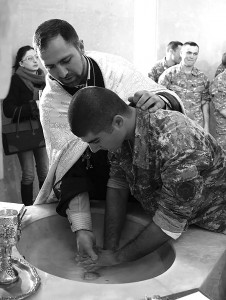
It should be noted that although the Constitution of the Republic of Armenia does not envisage religious activities in the armed forces, the representatives of the Government and the parliamentarians often emphasize the importance of the presence of the Armenian Apostolic Church in the armed forces.
During the Q&A session with the journalists in the Armenian National Assembly, in response to an observation of a journalist that in schools and in the army the children and soldiers are forced to pray without taking into consideration whether the person is an atheist or not, Deputy Chairman of the National Assembly Eduard Sharmazonv answered:
“Good for them, they are doing the right thing, it is not a violation of rights. They are preaching neither fornication nor erotica. It is very nice that they [schoolchildren and soldiers] start the day with a prayer, we should do it in the Parliament too. We should have our spiritual awakening everywhere. There should be more lessons on our church history.”
The statement made by the spokesman for the ruling Republican party and the deputy Speaker of the RA National Assembly showed that in the Armed Forces of the Republic of Armenia the soldiers are forced to pray irrespective of whether or not they relate to a certain religion or faith and that the Armenian authorities are not only aware of this situation but all this is happening with their blessing.
According to the research data of the Helsinki Citizens’ Assembly Vanadzor Office, clergymen have been exempt from military service or received deferment by the RA Government decisions since 1998.
Currently the human right defenders are concerned that given the “special” status of the Armenian Apostolic Church in the armed forces and the New Legislative Regulations on Conscription and Military Service which allows the government to release soldiers from service or give deferment, the Government will continue sponsoring the Armenian Apostolic Church’s spiritual servants by releasing them from their duties of ensuring the security of the country.
3. The number of fatalities in the RA and NK armed forces for January-September 2017
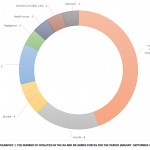
Due to the continuous monitoring carried out by Peace Dialogue NGO over the death cases recorded in the RA Armed Forces, the organization has received information about 10 fatalities recorded within the period July-September 2017.
The organization has received information about 45 fatalities in total for the period January-September 2017: 19 fatalities were recorded in Armenia, and 26 fatalities in Nagorno Karabakh. Causes of the fatalities: 4 murder cases, 8 suicide cases, 20 ceasefire regime violations, 5 fatal incidents, 2 cases are the result of negligence, 2 cases are the result of health issues, 2 cases are the result of safety rules violations, and 2 death cases the causes of which are unknown yet.
See Infographic 1: The number of fatalities in the RA and NK Armed Forces for the period January -September 2017.
4. Information related to the investigation of private soldier Davit Terteryan’s death case
The body of private soldier 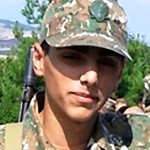 was found with a mortal gunshot wound in the forehead on February 18, 2016 in a combat post of N military unit. The official hypothesis of the death is suicide.
was found with a mortal gunshot wound in the forehead on February 18, 2016 in a combat post of N military unit. The official hypothesis of the death is suicide.
The criminal case report reads that Davit Terteryan, after completing his duties of a day shift, at approximately 1:10p.m., shot himself in the forehead while on the watchtower. The successors of the aggrieved party and their representative, Peace Dialogue expert R. Martirosyan do not agree with this hypothesis.
On April 18, 2017, the deputy head of the first garrison Investigative Department S. Baghdasaryan dismissed the criminal case on the grounds of absence of a possible criminal cause.
The aggrieved party appealed the verdict.
On June 8, 2017 First Garrison Military Prosecutor N. Gabrielyan rejected the complaint of the aggrieved party and stated that the case was dismissed and there are no grounds for eliminating the decision of dismissal.
Whereas on 21 June 2017, Military Prosecutor V. Haroutyunyan made a decision to satisfy the aggrieved party’s motion and eliminated the investigator’s unlawful decision for dismissing the case. He even pointed out that the prosecutor made an “unlawful and ungrounded decision”.
The reason why the aggrieved party’s complaint was satisfied was that the preliminary investigative body failed to adequately assess a number of factual circumstances by not implementing its positive obligations under the law. It should be noted that the legal assessment of these circumstances could have changed the suicide hypothesis put forward by the investigative unit.
Unfortunately, by eliminating the decision of dismissing the case, the Military Prosecutor not only did not punish his subordinates for unlawful acts, but appointed the additional investigation to the same garrison again.
Based on the foregoing, the aggrieved party challenged the first garrison division, the first garrison military prosecutor’s office and motioned for the investigation of the case to be appointed to another investigative body.
5. Information related to the investigation of private soldiers Grigor Avetisyan’s and Souren Aramyan’s death cases
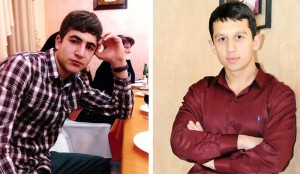 According to the preliminary investigation, based on the phone-book brought to the RA IC 5th garrison investigative division on April 6, 2016, on April 5, 2016 at about 2:30-3:00 a.m. privates Grigor Avetisyan and Suren Aramyan of the RA MoD N28418 military unit received fatal gunshot wounds at the artillery firing range of the N 75937 unit in unknown circumstances and died immediately. Meanwhile, privates of the same military unit Hakob Gevorgyan and Areg Baghdasaryan received gunshot wounds on the lower limbs. The same day, in the evening private soldier of N 28418 military unit Davit Doumikyan turned himself to the Vardenis Military Police department and confessed that he murdered Avetisyan and Aramyan. However, according to the information that the aggrieved party received, Doumikyan withdrew his confessions and has so far insisted that they were extorted from him.
According to the preliminary investigation, based on the phone-book brought to the RA IC 5th garrison investigative division on April 6, 2016, on April 5, 2016 at about 2:30-3:00 a.m. privates Grigor Avetisyan and Suren Aramyan of the RA MoD N28418 military unit received fatal gunshot wounds at the artillery firing range of the N 75937 unit in unknown circumstances and died immediately. Meanwhile, privates of the same military unit Hakob Gevorgyan and Areg Baghdasaryan received gunshot wounds on the lower limbs. The same day, in the evening private soldier of N 28418 military unit Davit Doumikyan turned himself to the Vardenis Military Police department and confessed that he murdered Avetisyan and Aramyan. However, according to the information that the aggrieved party received, Doumikyan withdrew his confessions and has so far insisted that they were extorted from him.
On March 4, 2017, the investigator of the case S. Sargsyan made a decision to separate criminal case N90150217 from criminal case N90655516 and send case N 90655516 to trial.
Two months later, on May 3, 2017, the aggrieved party was presented with the copy of this decision. After being acquainted with the decision and analyzing it together with the other materials of the criminal case, the aggrieved party found that a false investigation of the case was conducted. Because of that false investigation, the preliminary investigative body brought charges against D. Doumikyan for killing G. Avetisyan. Based on all abovementioned, the aggrieved party finds it necessary to dismiss the decision of separating one case from another case and insists to return to the prosecutor the case N90655516 that was sent to trial. To support this argument the aggrieved party presents a number of reasons:
- The aggrieved party is convinced that following G. Avetisyan’s murder, the unknown perpetrators transported Avetisyan’s body and placed it in front of the tent. This is evident from both the crime scene record and the case materials: according to the crime scene examination report, no traces of blood were detected either under or near the corpse, whereas the expert conclusion of G. Avetisyan’s body, as well as the forensic ballistic reports state that Avetisyan had lost a lot of blood. According to the expert conclusion of Avetisyan’s corpse, as well as the results of the forensic ballistic and forensic medical examination, Avetisyan lost a large amount of blood. Some part of the blood, 1800ml was found in the chest cavity. Almost the same amount of blood had to be exhausted from G. Avetisyan’s body. Additional evidence is provided by the photographs taken simultaneously with the crime scene investigation. The fact that G. Avetisyan has lost a lot of blood and that a significant part of it has leaked is proven by the examination of the clothes. Thus, after examining G. Avetisyan’s jacket, the expert points out that 43,5×27 cm absorbed blood trace was found on the reverse side of the jacket and 40×24 cm on the outside and the blood belongs to Avetisyan. The expert found 67x41cm absorbed blood trace on the right front part of the jacket through the right back side of the jacket. However, as we have noted, according to the examination report, no traces of blood were detected either near or under the corps.
- Based on the expert examination report, during the examination of the crime scene 4 bullet shells were found fired from the rifle attached to Sashik Arakelyan. Throughout the whole investigation the investigators failed to answer 2 questions how S. Arakelyan’s rifle ended up in the crime scene and who fired from the rifle. According to the investigation report of the crime scene, based on the locations of the 22 bullet shells confiscated during that examination, their packaging numbers and expert opinion it becomes clear that the 4 bullet shells fired from Sashik Arakelyan’s rifle were found in front of the tent. The aggrieved party is also convinced that G. Avetisyan was murdered by the gunshots fired from that same rifle and the criminal case files also prove this. However, the preliminary investigative body, by separating from the criminal case the part referring to G. Avetisyan’s death and sending it to trial, failed to find out how the rifle ended up in the first firing point and who fired gunshots: according to the document “List of names” of the first artillery battery, Sashik Arakelyan was on a leave when the incident happened and returned only 3 days later.
- In an additional testimony F.Hovhannisyan informed that in the evening of the incident an argument broke out between Vardges Margaryan and Grigor Avetisyan. Captain R. Hakobyan commanded them to stop the dispute. After that M. Margaryan threatened G. Avetisyan that it was not over and he was going to talk to him later. No investigation was carried out in connection with that incident, neither the soldiers at the base who were witnesses of the incident nor witness Hakobyan were questioned. Moreover, it was not revealed how the dispute between V.Margaryan and G. Avetisyan developed further which could possibly be one of the causes of the murder.
- According to D. Doumikyan’s testimony 3 conflicts occurred after the midnight. The first conflict was between G. Avetisyan and S. Aramyan over Hakob Gevorgyan. The cause of the second conflict according to Doumikyan was that Aveitsyan burnt Mamud Avdalyan’s leg. Doumikyan also testified that there was a clash between Avdalyan and Avetisyan in the past in the military unit. Only the interested parties of the incident Gevorgyan and Avdalyan were questioned and said that there was no conflict in the past. The witnesses of the incident were not questioned.
- In an additional testimony Avdalyan mentioned that following the incident he got a permission from Captain Hakobyan and did not leave the tent and did not participate in the circular defense because he was afraid of darkness. According to the case documents, after the gunfire captain Hakobyan ordered everyone to turn to circular defense. The witness testified that following the incident he did not fire from his rifle and that the rifle was always with him. However, according to Weapon Arms Recording protocol, one bullet was missing from his rifle magazine. According to the expert examination report ashot was fired from his rifle, therefore M. Avdalyan was lying. However, the investigators failed to investigate this contradiction and to find out where and in which circumstances Avdalyan fired from the rifle, or if it was not him who did that.
- In his testimony F. Hovhannisyan pointed out that he did not shoot during the circular defense because he knew that no enemy group had penetrated their position. However, in the Rifles and Sub-pockets protocol it is mentioned that the investigator confiscated F. Hovhannisyan’s rifle and the sub-pocket and recorded that two bullets were missing from the storage boxes of the sub-pockets.
That and other contradictions in the criminal case force the aggrieved party to be skeptical about the results of the preliminary investigation and to demand that N 90655516 criminal case that was sent to trial to be sent back to the prosecutor.
6. Update on the court case of the death of Private Manuchar Manucharyan
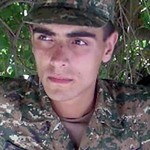 By the end of July, 2017 the trial of Manuchar Manucharyan’s case was over and the parties passed to the phase of the judicial speeches. The prosecutor stated that in the second expert conclusion the experts left all the opinions regarding the case unchanged as stated in the first one, that is M. Manucharyan committed suicide, and therefore, there is a causal link between Manuchar’s suicide and the actions of the perpetrators Gaboyan and Stepanyan charged with the case. In the end, the prosecutor suggested to imprison defendant Gaboyan for 8 and Stepanyan for 7.5 years.
By the end of July, 2017 the trial of Manuchar Manucharyan’s case was over and the parties passed to the phase of the judicial speeches. The prosecutor stated that in the second expert conclusion the experts left all the opinions regarding the case unchanged as stated in the first one, that is M. Manucharyan committed suicide, and therefore, there is a causal link between Manuchar’s suicide and the actions of the perpetrators Gaboyan and Stepanyan charged with the case. In the end, the prosecutor suggested to imprison defendant Gaboyan for 8 and Stepanyan for 7.5 years.
In his speech the representative of the victim’s successor, R. Martirosyan touched upon some of the important omissions in the case.
- The deliberate murder was qualified as a suicide and in order to prove this false hypothesis of the prosecutor correct a criminal investigation was carried out: false testimonies were extorted from key witness Libik Mkrtchyan, as well as from other servicemen. This has been proven by trial.
- Before charges were brought against Gaboyan and Stepanyan, with request of the preliminary investigative body M. Manucharyan’s former classmate Lilit was taken to the Military Police department twice. She was forced to give false testimonies that allegedly M. Manucharyan was in love with her and after learning that Lilit was planning to marry someone else, committed suicide. However, Lilit was brave enough and refused to give false testimonies. She later told about all this to the representative of the victim’s successor. M. Manucharyan’s brother O. Manucharyan also referred to this in his testimony after which the parties motioned for Lilit to be subpoenaed to court. According to them that would provide clarifications whether the activities of the preliminary investigative body were within the law or not, however the Judge rejected this motion.
- M. Manucharyan’s fingerprints were not found on M. Manucharyan’s rifle, which was recognized as an evidence, although the investigators considered proven that he committed suicide with that same rifle. The investigators haven’t carried out any investigation in this direction and haven’t tried to find out who erased the fingerprints from the weapon.
- The aggrieved party’s major evidence since the beginning of the trial has been the 5mm diameter hole found on Manucharyan’s trousers with a burnt trace around it. This fact is a clear proof that it was a murder but the expert, after examining the trousers, mentioned that allegedly there was no such hole found on them. Based on the testimony of the expert he did not carry out an examination of the trousers. The fact of the crime is already obvious: the expert did not examine the trousers, however in the examination report he mentioned that he had allegedly done it and no such trace was found on them. It becomes clear that M. Manucharyan’s trousers were not subjected to actual substantive examination. It should be noted that all the reports of crime by the aggrieved party remained unanswered.
Judge Mkertchyan also rejected the aggrieved party’s motion to send the trousers for examination. In his decision of rejection, the presiding Judge also mentioned that he will refer to this contradiction when making the verdict in the decision-room.
According to the victim’s successors this decision of the Judge is simply nonsense since Judge Mkrtchyan is not an expert and he cannot determine in the decision-room what the mentioned damage on the trousers is, whether it is a mechanical damage or it was the result of gunshot.
In his speech R. Martirosyan announced that the verdict of acquittal for two defendants in the case is acceptable for the aggrieved party because they did not commit any crime.
On August 30, 2017 court read the verdict. We will refer to it in our next report.
7. Update on the court case of the death of Private Haroutyun Hambaryan
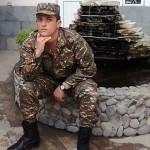 As we have mentioned in our previous reports, the court issued two decisions connected with the death case of H. Hambaryan both in favor of the aggrieved party and considered to be proven that a biased and incomplete investigation had been carried out.
As we have mentioned in our previous reports, the court issued two decisions connected with the death case of H. Hambaryan both in favor of the aggrieved party and considered to be proven that a biased and incomplete investigation had been carried out.
The representative of the victim’s successor, expert R. Martirosyan believes that these decisions should have provided basis for not returning the case that was removed from suspension to the mentioned investigators and not instructing the case to Prosecutor Aghabekyan.
Given the circumstances when the case was again returned to the same investigative group, which as we have mentioned earlier carried out an incomplete and biased investigation, the aggrieved party had no choice but to:
- challenge the investigative group and the prosecutor of the case, as well as to petition for the investigation to be assigned to another investigative body,
- motioned for a forensic trace examination of H.Habamryan’s clothes to be carried out, which has not been carried out so far although this is a necessity in the case: the ballistic examination showed that there were some mechanical damages found on the clothes, which indicates use of violence against Hambaryan before the murder. During the preliminary investigation, it was necessary to find out the nature of these mechanical injuries, their origin and limitation, which would once again question the hypothesis proposed by the prosecution.
- The aggrieved party also appealed for re-qualifying the case under Article 104 of the Criminal Code, that is a deliberate murder: in the investigation of the case under the article of suicide, the preliminary investigative body did not find anyone guilty and dropped the case, concluding that the investigation with the suicide hypothesis had already been exhausted itself.
All the motions of the aggrieved party were rejected by the preliminary investigative body. The victim’s successors are convinced that the investigation of the case continues with an irrational hypothesis of a “suicide”.
8. The Administrative Court rejected Peace Dialogue’s request to force the Ministry of Defense to provide information to the Organization
In July, 2017 The RA Administrative Court, presided over by Judge Armen Dilanyan rejected Peace Dialogue’s case that demanded administrative charges brought against then Defense Minister S. Ohanyan under Article 189.7 of the RA Criminal Code.
In April, the same court, presided over by Judge Karen Zarikyan rejected another lawsuit filed by Peace Dialogue NGO against the RA Ministry of Defense requesting that the ministry provides official information on the death of soldiers for the period of 1994-2014, including the full names of the deceased soldiers, the location of the incidents, the dates, the unit numbers, the respective unit commander’s full names and ranks, the cause of death and a brief description of the incident. After applying to the Ministry of Defense to receive the above-mentioned information, the organization filed a lawsuit requesting to compel the Minister of Defense to provide the requested information and demanded administrative charges brought against then Defense Minister S. Ohanyan.
A court decision was made to temporarily suspend the hearing of these lawsuits since the final decision was connected with a court decision that was to be made over another lawsuit filed by Peace Dialogue which challenged the legitimacy of the classification of secret information as described in Section 17, Point 42 and 43 of the list provided by Executive Order N9 of the then Defense Minister Seyran Ohanyan and to partially annul the executive order. After being rejected in all the court instances the case was dismissed and again rejected.
 Download Quarterly Report on the Human Rights Situation in the Armenian Armed Forces/Vol.5 (Period: July -September, 2017) (Version: pdf, 381 kB)
Download Quarterly Report on the Human Rights Situation in the Armenian Armed Forces/Vol.5 (Period: July -September, 2017) (Version: pdf, 381 kB)




